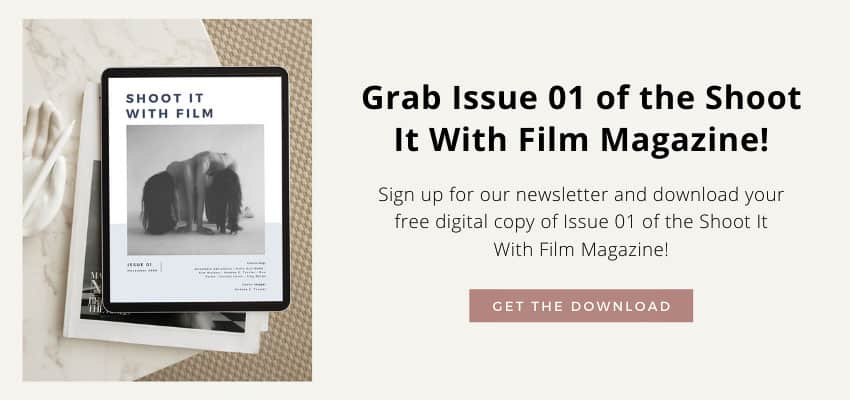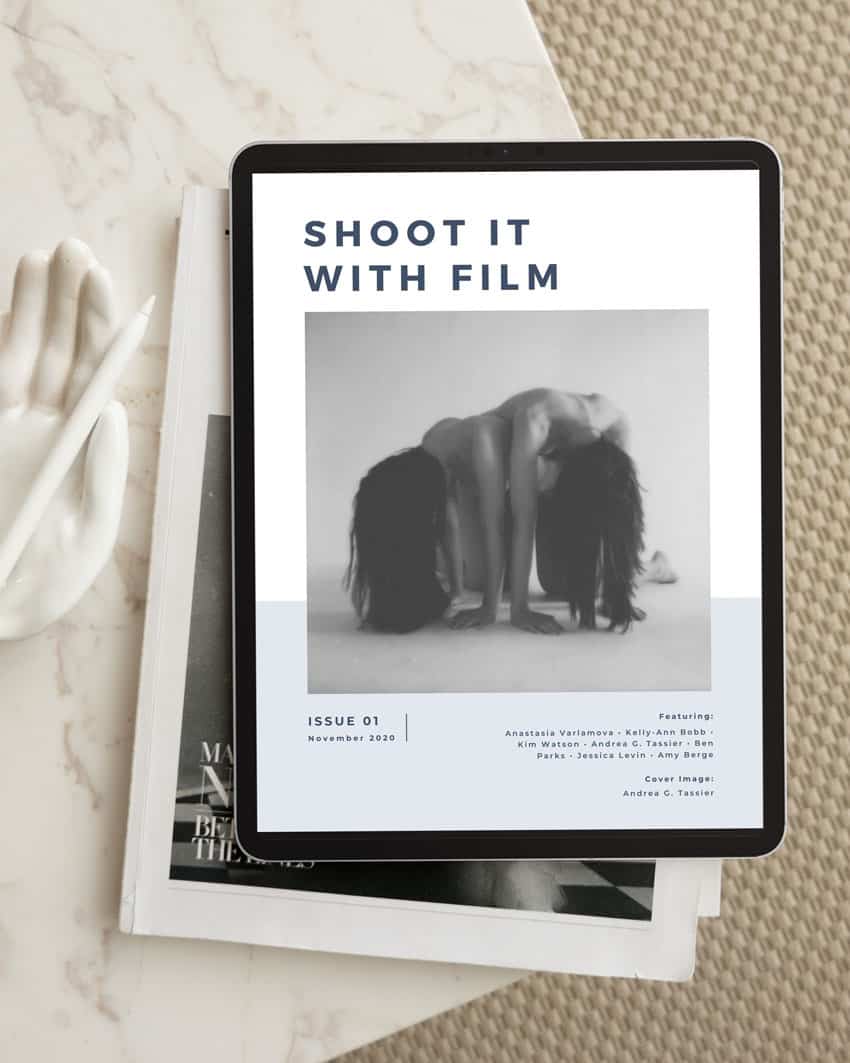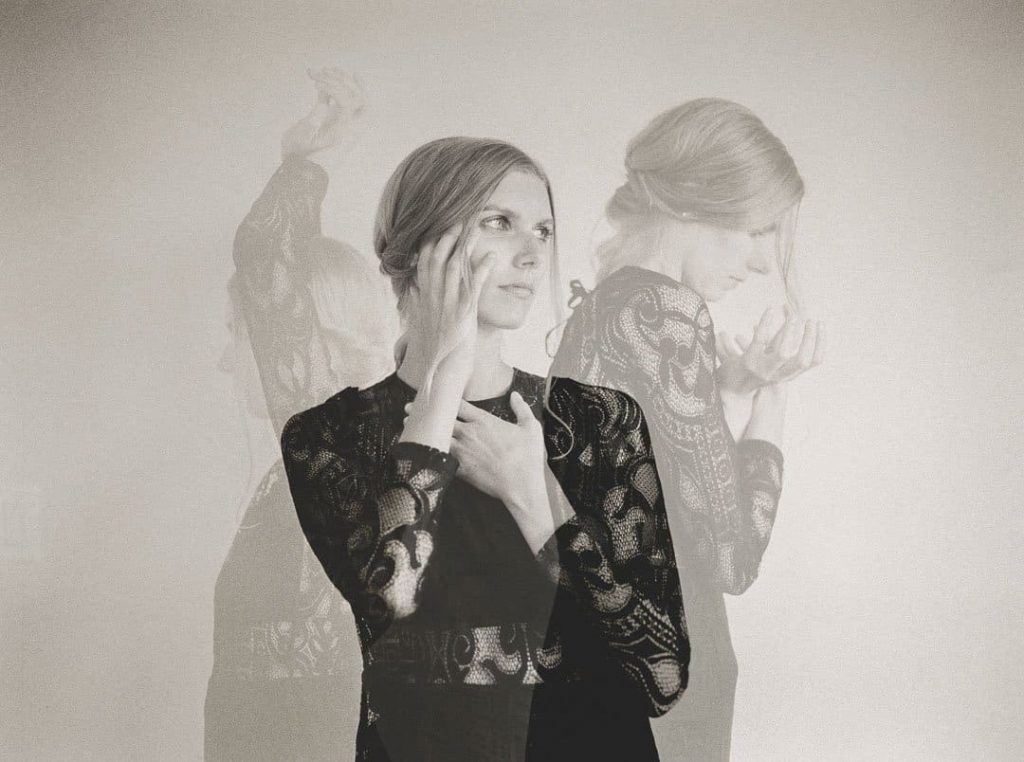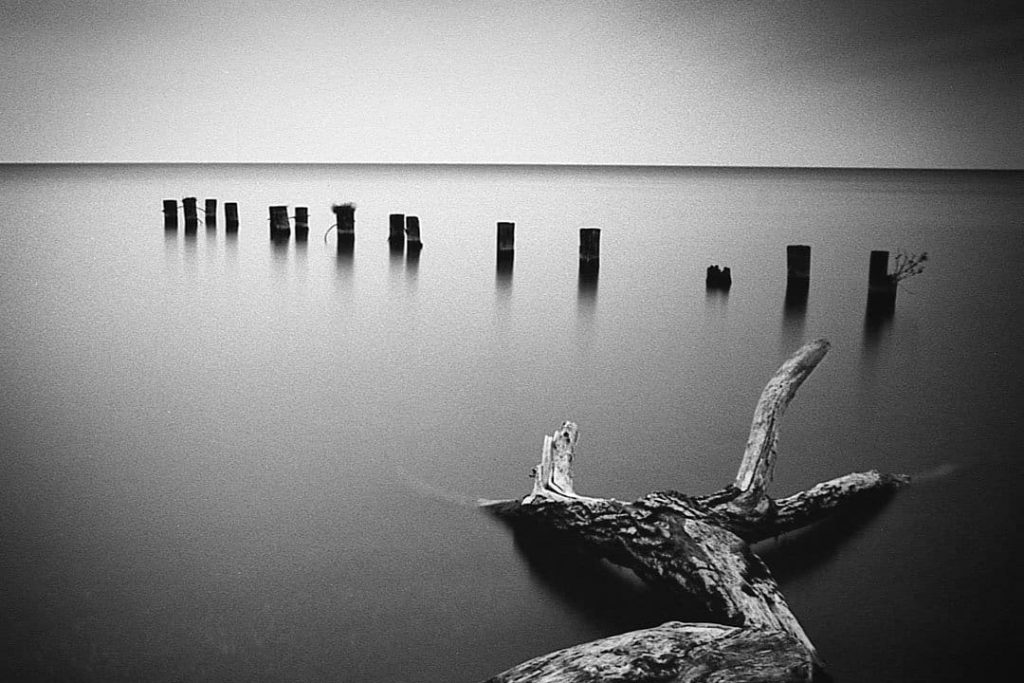
Written by James Baturin
I recently took my film camera (a Nikon FE2) to a couple of local concerts. Concert photography on film is not a subject matter I shoot often, but, of course, it’s always good to try something new in your photography.
I decided to use it as an opportunity to experiment, trying to combine some double and long exposures. Like with all experiments, not all the frames were a success. But I got a few neat shots, so I thought I’d share a few things I learned!
And be sure to check out my other Shoot It With Film articles about shooting long exposures, like Long Exposure Film Photography Tutorial and Shooting Long Exposure Star Trail Photography with Film.




Choosing a Film for Concert Photography
Both of the shows were indoors, so I knew I was going to need a pretty fast film for the low light.
Ilford Delta 3200 (find on Amazon) was a natural choice, not just for the high ISO, but the gritty grain and high contrast look suits the vibe of the local music scene. I shot it at box speed, but Delta 3200 is a versatile film that can give good results pushed to 6400 if the light is very poor.


Metering for Indoor Mixed Lighting Situations
The lighting at both venues made metering my shots tricky.
The first show took place on a small stage in a dim room with lots of bright stage lights. Because of the bright stage lights, I expected the in-camera light meter in my Nikon FE2 to underexpose the shots. So I overexposed most of the shots by about a stop, and found that my exposures were pretty good.
The second concert venue was a little bit strange, with the band set up on the floor in front of a large, opaque window with light pouring in from outside.
This set up is great for silhouettes, but if I wanted any details in the band members features, I needed to overexpose the shot by at least a stop. For most indoor concert film photography, I suspect the lighting is going to require you to overexpose a bit, at least if you are using a reflective light meter.

Experimenting with Double Exposures and Long Exposures
If you follow my photography you know I love long exposures. And I’ve been wanting to shoot more double exposures, so I thought, “Why not combine them?”
Photographing these concerts seemed like the perfect place to try some experimenting.
I won’t get into the how-to’s of double exposures here, but basically a double exposure is when you overlap two (or more) exposures on the same frame. (You can read some more tips for double exposures here.)
And, in this case, when I say long exposure, I’m talking shutter speeds of a second or half a second to try and capture the movement of the musicians or the moving stage lights.

In the photo above, for example, I had an image in my mind of the artist disclosing a part of their soul in their music.
I took my first frame of the artist exposed normally in the bottom left corner. With the first shot exposed, I set the camera up for a double exposure, and set the shutter for ½ a second.
I wanted to create a ghostly blur moving from the musician in my first frame and up towards the top right. So I framed the shot and clicked the shutter, moving the camera while it exposed, essentially “smearing” the image of the singer across the emulsion of the film. I was really pleased with the result.


At the second show, as I mentioned before, the lighting forced me into a lot of silhouettes. Don’t get me wrong, silhouettes are great, but there was only so many ways I could capture the singer’s profile against the back light of the window.
Scattered around the venue, were a number of strobe lights moving in a variety of patterns on the walls and ceiling. So I took a ½ second or 1 second exposure of the moving lights on the walls, hoping the longer exposure would portray them like stars streaking across the frame.
I then did a second, normal exposure overtop of the band itself. Again, some of these shots turned out better than others, but some definitely created the effect I had imagined.

Thank you so much, James! James is a regular contributor here at Shoot It With Film, and you can check out his other articles here, including an article on how to shoot long exposures and shooting star trails on film. You can also check out James’s work on Instagram.
Leave your questions about shooting concert photography on film below in the comments! You can read all of our film tutorials here!








Blog Comments
patricia tedeschi
July 26, 2019 at 7:54 am
Very helpful information and images are captivating. I assume with this camera there is a multiple exposure mode and that you did not have to go through the process of holding the film back from advancing prior to making the second image. I have a Bessa Rangefinder and do not think it has a multiple exposure button. Manually preventing film advance looks somewhat intimidating.
Any suggestions for creating multiple exposure with this type of film camera?
Thank you.
James
July 27, 2019 at 1:29 pm
Hey Patricia. Yes my Nikon FE has a lever that makes double exposures pretty simple. I’ve never used a Bessa but if there isn’t a lever for making double exposures then I would assume you would have to prevent the film from advancing manually. I’ve done it on an old Pentax and you’re right it is a bit intimidating, but it does work if you can figure it out. Sorry that’s not more helpful. Good luck!
patricia tedeschi
July 28, 2019 at 7:55 am
Thanks for prompt response. My Pentax 645N has a multiple exposure button so after being inspired by your images, and not wanting to fiddle around with my Bessa, I started using the Pentax for multiple exposure experiments Cheers.
Amy Berge
July 26, 2019 at 8:12 am
THESE ARE AMAZING! Thank you for sharing!